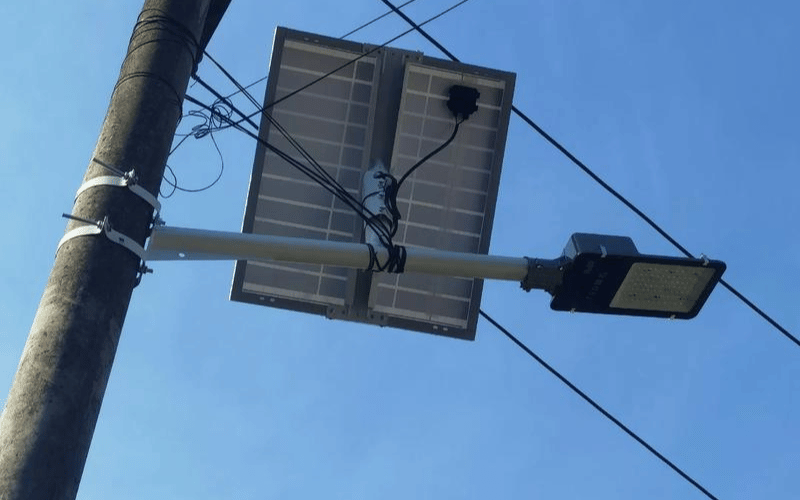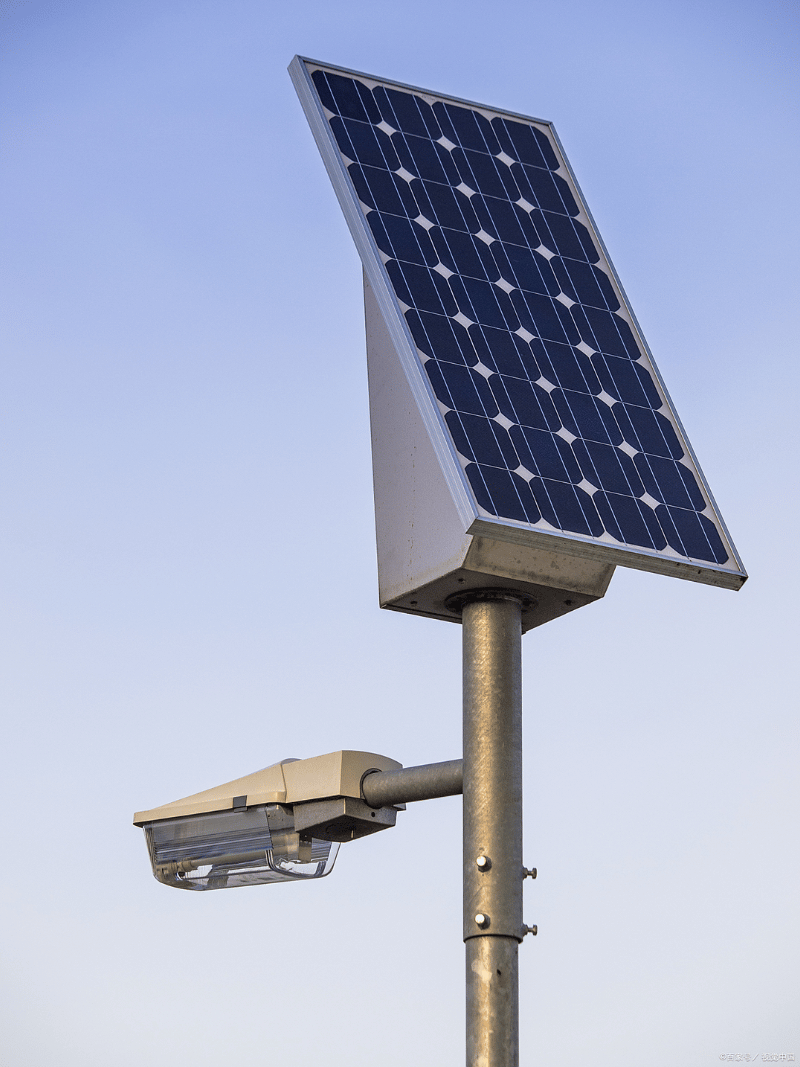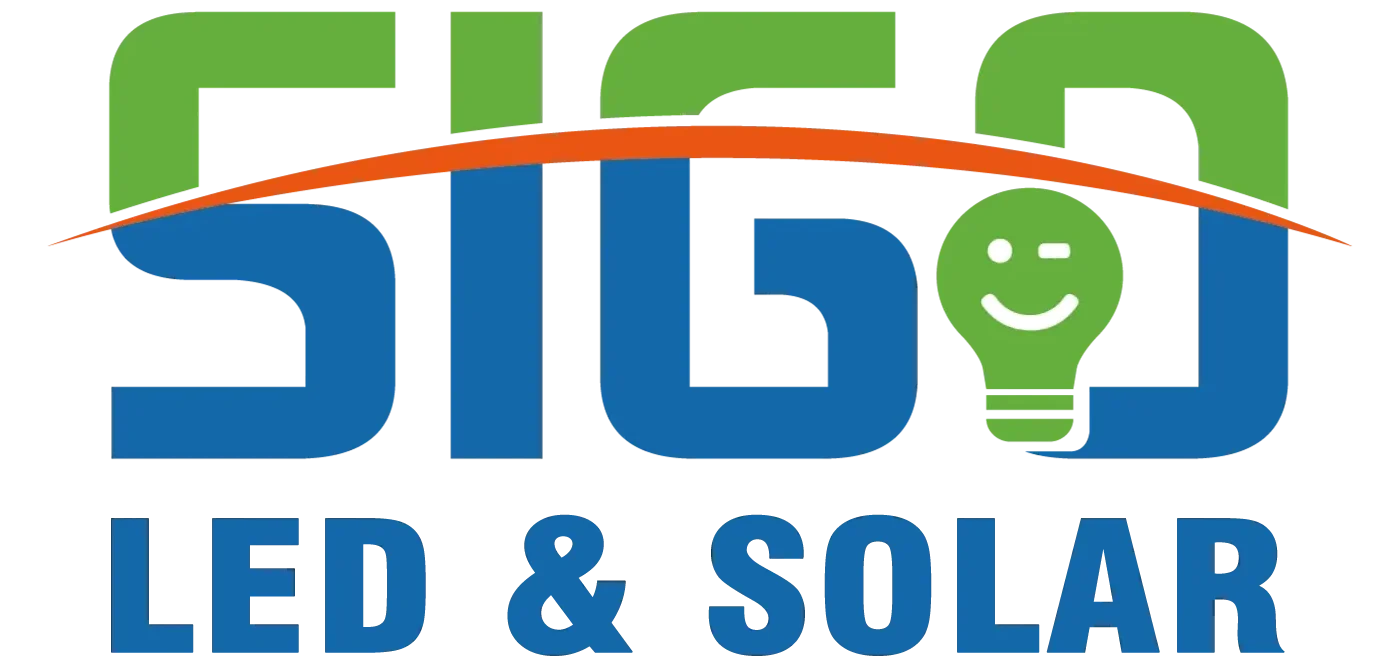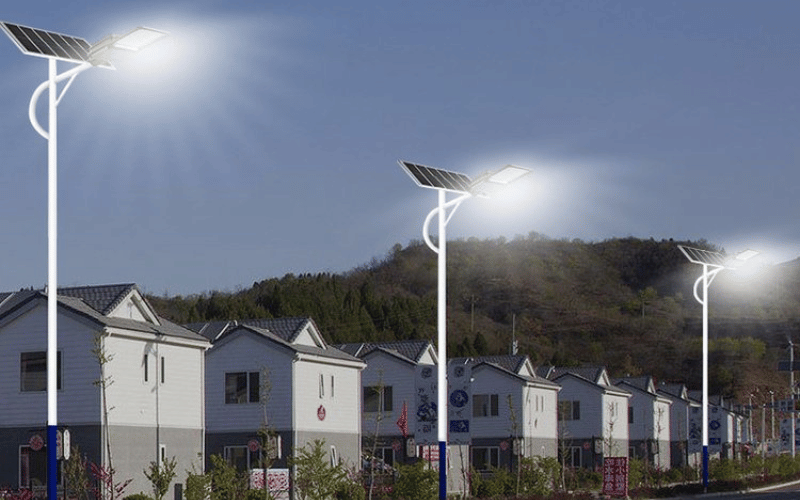Solar lights have become a go-to solution for outdoor lighting. They are energy-efficient, eco-friendly, and cost-effective, making them a popular choice for homeowners and businesses alike. Whether it’s illuminating a garden path or lighting up a parking lot, solar lights offer convenience without the hassle of wiring or high electricity bills.
However, one question comes up often: Can solar lights work in cloudy or overcast weather? The short answer is yes, but their efficiency decreases. Solar panels still capture sunlight on cloudy days, but the reduced sunlight means less energy is stored in the battery. This can lead to shorter runtimes or dimmer lights, depending on the system’s quality and design.
In this guide, I’ll explain how solar lights function in less-than-ideal weather. We’ll explore the factors that affect their performance, such as panel type and battery capacity. I’ll also share practical tips to help you optimize your solar lights, ensuring they perform reliably even when the sun isn’t shining at its best. Let’s dive in!
Table of Contents
ToggleHow Solar Lights Work in Cloudy Weather
Solar lights are designed to harness sunlight and convert it into electricity, but what happens when the sky is overcast? Understanding how they function in cloudy weather can help you set realistic expectations and make the most of your system. Let’s break it down.
The Basics of Solar Panels
Solar panels don’t rely on heat to generate electricity—they rely on light. Specifically, they use photovoltaic (PV) cells to capture sunlight and convert it into electrical energy. Even on cloudy days, solar panels can still absorb light, though at a reduced efficiency.
Diffuse light, which occurs when sunlight scatters through clouds, plays a key role here. While it’s not as strong as direct sunlight, it still provides enough energy to charge the battery. For example, monocrystalline panels, known for their high efficiency, can capture and convert diffuse light more effectively than polycrystalline panels.
Impact of Cloud Coverage
Not all cloudy days are the same, and the density of cloud cover significantly affects how much energy your solar lights can generate.
- Light Cloud Cover: On days with thin or scattered clouds, solar panels can operate at 50–70% of their full capacity. This means your lights will still charge reasonably well and provide adequate illumination at night.
- Moderate Cloud Cover: With denser clouds, efficiency drops to around 30–50%. While the system will still function, the battery may not fully charge, leading to shorter runtimes.
- Heavy Cloud Cover: On overcast days with thick clouds, performance can drop to as low as 10–20%. In these conditions, the lights may dim or turn off earlier than usual, depending on the battery’s capacity and charge level.
If you live in an area with frequent cloudy weather, invest in high-efficiency monocrystalline panels and larger battery capacities. These components ensure your system can store enough energy to compensate for reduced charging during overcast days.
By understanding how solar panels utilize diffuse light and how cloud density impacts performance, you can better plan and optimize your solar lighting system. Even in cloudy weather, the right materials and design choices can keep your lights running effectively.

Factors That Affect Charging Efficiency
The efficiency of your solar lights depends on several key factors. Each component and decision plays a role in how well your system charges, especially in less-than-ideal conditions. Let’s explore these factors in detail to help you optimize performance.
Panel Quality
The quality of your solar panels is the foundation of your system’s efficiency. Not all panels are created equal, and their ability to perform in low-light conditions varies significantly.
Monocrystalline panels are the top choice for solar street lights. Their higher efficiency rates (20–22%) allow them to capture more energy, even on cloudy days. Unlike polycrystalline panels, which struggle in low-light conditions, monocrystalline panels excel at converting diffuse light into electricity.
For example, a 100W monocrystalline panel can outperform a 120W polycrystalline panel on an overcast day. This efficiency makes monocrystalline panels the go-to option for areas with frequent cloudy weather or limited sunlight.
Always check the efficiency rating of your panels and opt for anti-reflective tempered glass to maximize light absorption.
Battery Type and Capacity
Your battery is the energy reservoir of your solar lighting system. Its type and capacity directly impact how long your lights can run after charging.
Lithium-ion (Li-ion) and lithium iron phosphate (LiFePO4) batteries are the best options for solar lights. LiFePO4 batteries, in particular, stand out for their long lifespan (3,000–5,000 cycles) and thermal stability. They can store energy efficiently, even when charging conditions are less than ideal.
In contrast, NiMH batteries, while eco-friendly, lack the energy density needed for high-performance systems. Lead-acid batteries, though cheaper, are bulky, require regular maintenance, and degrade quickly in extreme temperatures.
Choose a battery with a capacity that matches your system’s energy needs. For example, a 12V 100Ah LiFePO4 battery can store enough energy to power a 50W LED light for over 20 hours.
Placement and Shading
Where you place your solar panels can make or break your system’s efficiency. Even the best panels won’t perform well if they’re not positioned correctly.
Avoid placing panels in areas with shadows from trees, buildings, or other obstructions. Even partial shading can reduce energy production significantly. For instance, a shadow covering just 10% of a panel can lower its output by 30–40%.
Maximize sun exposure by positioning panels at the correct angle. The ideal tilt depends on your location’s latitude. For example, in regions near the equator, a tilt angle of 10–15° works best, while areas farther from the equator may require angles of 30–45°.
Regularly clean your panels to remove dirt, dust, and debris. A clean panel can improve energy absorption by up to 20%.
By focusing on panel quality, battery type, and proper placement, you can significantly improve the charging efficiency of your solar lights. Each of these factors works together to ensure your system performs reliably, even in challenging conditions.

Tips to Maximize Solar Light Performance in Cloudy Weather
Cloudy weather doesn’t have to mean dim or unreliable solar lights. With the right strategies, you can ensure your system performs efficiently even when sunlight is limited. Let’s dive into actionable tips to get the most out of your solar lights.
Strategic Placement
Where you place your solar panels is critical to their performance. Proper positioning ensures they capture the maximum amount of sunlight, even on overcast days.
- Face Panels South: In the Northern Hemisphere, always position your panels to face south. This orientation captures the most sunlight throughout the day. If you’re in the Southern Hemisphere, face them north instead.
- Avoid Obstructions: Keep panels clear of shadows from trees, buildings, or fences. Even partial shading can drastically reduce energy production. For example, a shadow covering 20% of a panel can cut its output by nearly half.
- Optimize Tilt Angle: Adjust the tilt of your panels based on your location’s latitude. For instance, in a region with a latitude of 30°, a tilt angle of 30° will maximize sunlight absorption.
Reassess panel placement seasonally. The sun’s angle changes throughout the year, and small adjustments can improve efficiency.
Regular Maintenance
Even the most advanced solar panels can’t perform well if they’re dirty or obstructed. Regular maintenance keeps your system running at its best.
- Clean Panels: Dust, dirt, and debris can block sunlight and reduce efficiency by up to 20%. Use a soft cloth or sponge with water to clean panels every few weeks. In snowy regions, clear snow off panels promptly to prevent energy loss.
- Inspect for Damage: Check for cracks, loose connections, or other issues that could impact performance. For example, a small crack in the tempered glass can let moisture in, damaging the cells.
- Monitor Performance: Use a solar charge controller with a display to track energy production and battery levels. This helps you identify and address issues early.
Schedule maintenance during early mornings or late afternoons to avoid overheating the panels while cleaning.
Energy Management
Efficient energy use is essential during cloudy weather when charging capacity is reduced. Smart energy management can extend your system’s runtime.
- Lower Brightness Settings: Reduce the brightness of your LEDs to conserve battery power. For example, switching from 100% to 70% brightness can extend runtime by several hours.
- Use Motion Sensors: Motion-sensor modes activate lights only when needed, saving energy during periods of inactivity. This is especially useful for pathways or parking lots.
- Upgrade Batteries: If cloudy weather is frequent, consider upgrading to a higher-capacity LiFePO4 battery. A larger battery stores more energy, ensuring your lights stay on longer even with reduced charging.
Pair your system with an MPPT controller to optimize energy harvesting and extend battery life, especially in low-light conditions.
By focusing on strategic placement, regular maintenance, and smart energy management, you can maximize the performance of your solar lights, even in cloudy weather. These practical steps ensure your system remains reliable and efficient, no matter the conditions.
Troubleshooting Common Issues
Even the best solar lighting systems can face challenges, especially in changing weather conditions or as components age. Understanding these common issues and how to address them ensures your solar lights remain reliable and efficient.
Reduced Daylight Hours
Shorter days and poor light quality during winter can significantly impact charging efficiency. With fewer hours of sunlight, your solar panels have less time to generate energy, and the lower angle of the sun reduces the intensity of light hitting the panels.
- Impact on Charging: During winter, solar panels may only operate at 30–50% of their full capacity. This can lead to undercharged batteries and shorter runtimes at night.
- Solutions: Adjust the tilt angle of your panels to capture more sunlight during the winter months. For example, increase the tilt by 10–15° to align with the lower sun angle. Additionally, consider reducing the brightness of your lights or using motion-sensor modes to conserve energy.
If reduced daylight hours are a recurring issue, upgrade to high-efficiency monocrystalline panels and larger battery capacities to store more energy.
Cold Weather Effects
Low temperatures can temporarily reduce battery efficiency, even in high-quality systems. Lithium-based batteries, such as LiFePO4, are particularly sensitive to extreme cold, which slows down their chemical reactions.
- Impact on Performance: In temperatures below 0°C (32°F), battery capacity can drop by 20–30%. This means your lights may not last as long during the night, even if the battery is fully charged.
- Solutions: Install your battery in an insulated or temperature-controlled enclosure to protect it from extreme cold. Some LiFePO4 batteries come with built-in heating elements to maintain optimal performance in freezing conditions.
If you live in a region with harsh winters, choose batteries specifically designed for cold climates, such as those with low-temperature charging capabilities.
Battery Degradation
Over time, all batteries lose their capacity to hold a charge. This natural aging process can lead to shorter runtimes and reduced overall performance.
- Signs of Aging Batteries: If your lights dim earlier than usual or fail to stay on throughout the night, it’s a clear sign that your battery is nearing the end of its lifespan. For example, a LiFePO4 battery typically lasts 5–7 years, while lead-acid batteries may only last 2–3 years.
- When to Replace: Replace your battery when its capacity drops below 70% of its original rating. For instance, if a 100Ah battery only holds 70Ah after a full charge, it’s time for a replacement.
Always recycle old batteries responsibly. Many manufacturers and local recycling centers accept used batteries to minimize environmental impact.
By addressing reduced daylight hours, cold weather effects, and battery degradation, you can troubleshoot common issues and keep your solar lights performing at their best. Proactive maintenance and smart upgrades ensure your system remains reliable, no matter the challenges it faces.
Frequently Asked Questions (FAQs)
Q: How much sunlight do solar lights need to charge?
A: Solar lights perform best with 6–8 hours of direct sunlight daily. This amount of sunlight ensures the battery charges fully and provides enough energy to power the lights throughout the night. In cloudy or winter conditions, charging may take longer, and the runtime could be shorter.
Q: Can solar lights work in shaded areas?
A: Solar lights can work in partially shaded areas, but their efficiency will drop. Even a small shadow can reduce energy production by 30–40%. For optimal performance, place solar panels in areas with full sun exposure and avoid obstructions like trees or buildings.
Q: Does artificial light help charge solar panels?
A: Artificial light can charge solar panels, but it is not effective. The intensity of artificial light is much lower than sunlight, so it provides minimal energy. Solar panels are designed to capture natural sunlight, which is far more powerful.
Q: What happens to solar lights during prolonged cloudy weather?
A: During prolonged cloudy weather, solar lights may charge at reduced efficiency, typically 10–30% of their full capacity. This can lead to shorter runtimes or dimmer lights. To improve performance, use high-efficiency panels, larger batteries, and energy-saving modes like motion sensors.
Conclusion
Solar lights can charge and function in cloudy weather, but their performance depends on proper placement, regular maintenance, and high-quality components. Investing in reliable solar lights with efficient panels, durable batteries, and smart controllers ensures consistent performance. By following best practices, you can maximize the efficiency and lifespan of your solar lighting system, even in challenging conditions.


